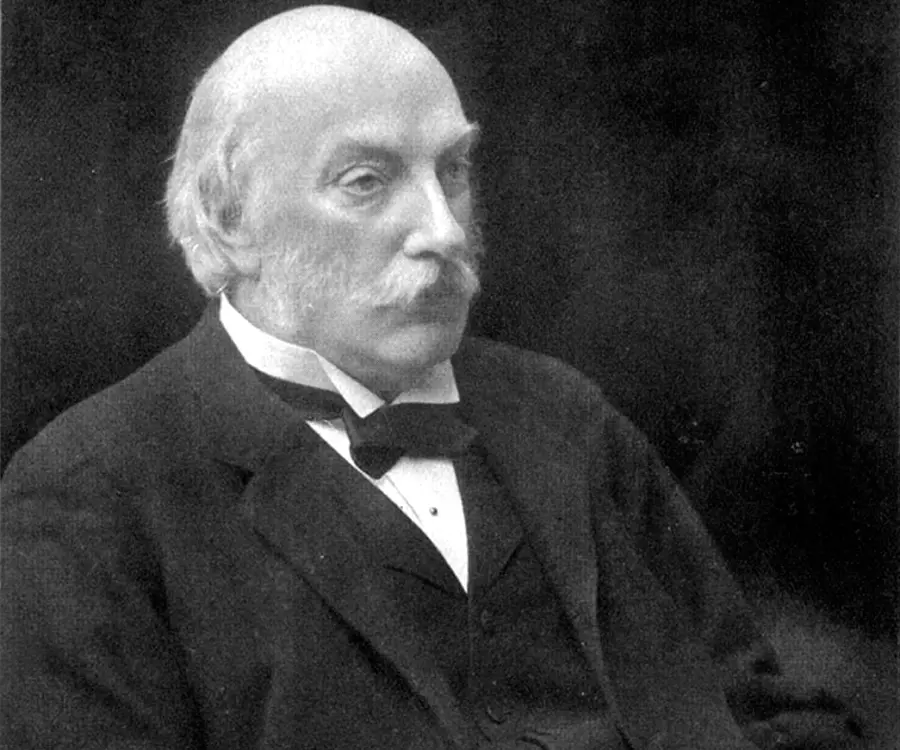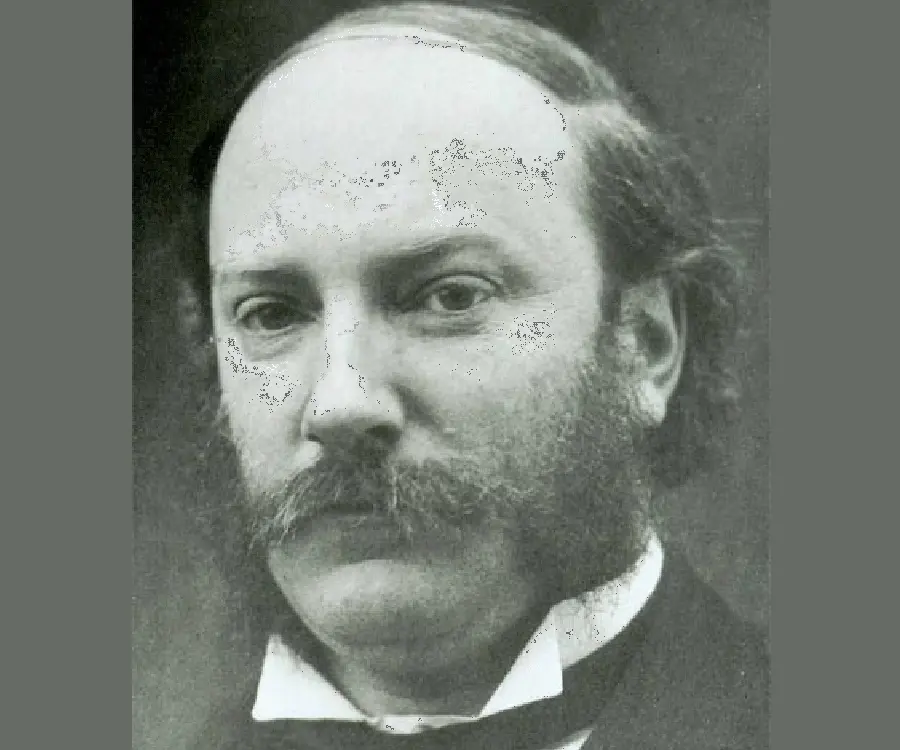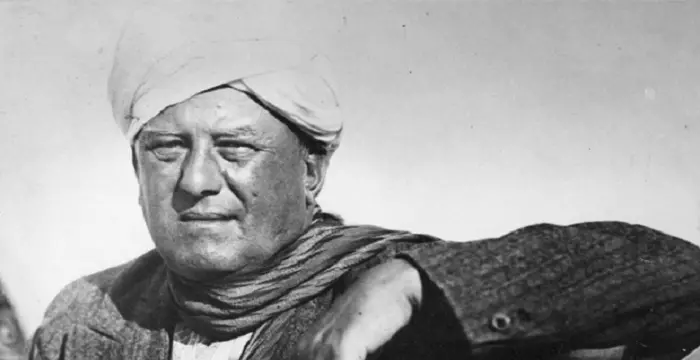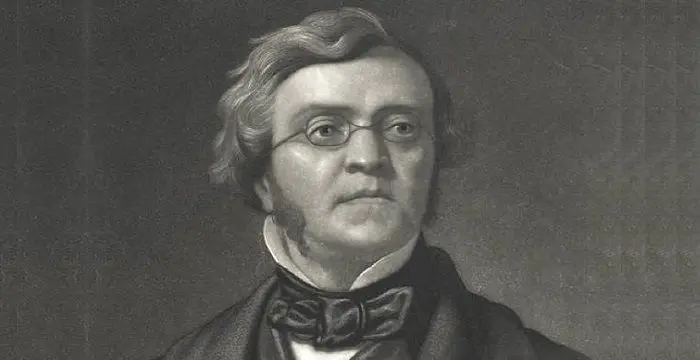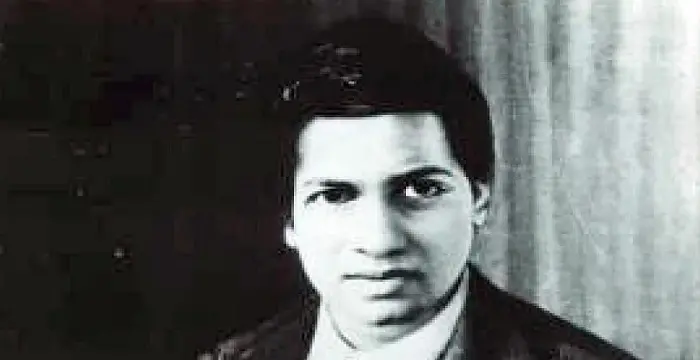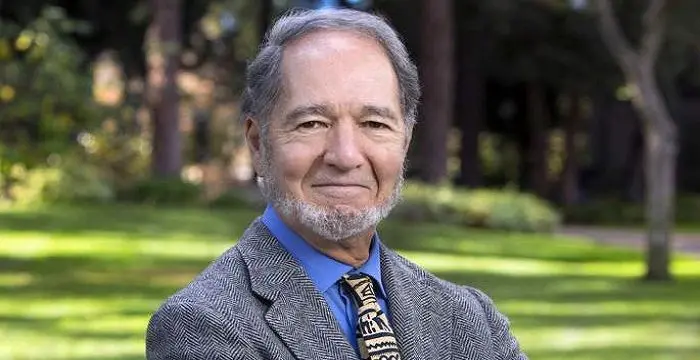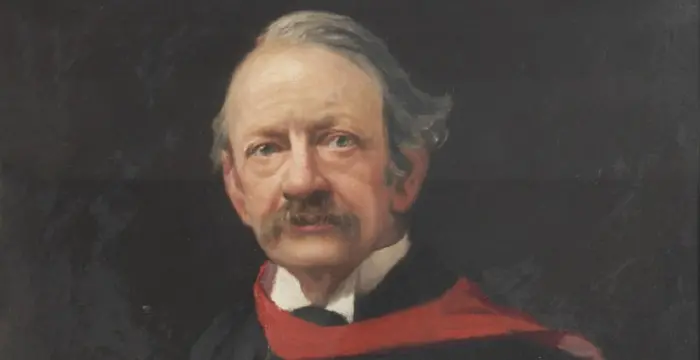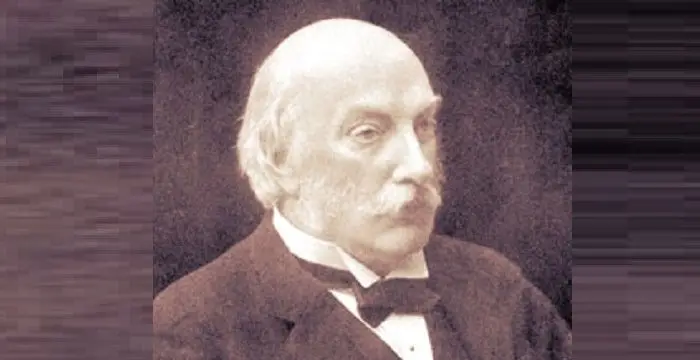
Lord Rayleigh - Discoverer of Argon, Birthday and Family
Lord Rayleigh's Personal Details
Lord Rayleigh was an English physicist who discovered the Argon gas and won the Nobel Prize for Physics in 1904
| Information | Detail |
|---|---|
| Birthday | November 12, 1842 |
| Died on | June 30, 1919 |
| Nationality | British |
| Famous | Trinity College, Cambridge, Scientists, Physicists, Discoverer of Argon |
| Spouses | Evelyn Balfour |
| Known as | John William Strutt, third Baron Rayleigh |
| Childrens | 4th Baron Rayleigh, Robert John Strutt |
| Universities |
|
| Notable Alumnis |
|
| Discoveries / Inventions |
|
| Birth Place | Langford Grove, Maldon, Essex, England |
| Religion | Christian |
| Gender | Male |
| Father | John Strutt, 2nd Baron Rayleigh |
| Sun Sign | Scorpio |
| Born in | Langford Grove, Maldon, Essex, England |
| Famous as | Discoverer of Argon |
| Died at Age | 76 |
Lord Rayleigh's photo
Who is Lord Rayleigh?
John William Strutt, 3rd Baron Rayleigh, was an English physicist noted for his discovery of the Argon gas, one of the rare gases of the atmosphere. Rayleigh was awarded the Nobel Prize for Physics in 1904 for this achievement. He shared the prize with chemist William Ramsay. He is also the famous for his discovery of ‘Rayleigh scattering’ which explains why the sky is blue. He also predicted about the surface waves, a phenomenon which is now named after him: ‘Rayleigh waves’. With hi patient experiments, he established the standards of resistance, current and electromotive force. Later in his life, he focused on electric and magnetic problems. Lord Rayleigh was a brilliant instructor. He supervised a practical instruction class in experimental physics and increased its roll-strength of five or six students to an advanced school of seventy physicists. He had a great sense of literary style and every paper he wrote was precise and simple in diction. He was a member of the House of Lords, but never allowed politics to interfere with science. He enjoyed tennis, music, travelling, and photography.
// Famous Physicists
Henry Cavendish
Henry Cavendish was a theoretical chemist and physicist, renowned for discovery of hydrogen and calculation of the mass of earth. To know more about his childhood, profile, timeline and career read on
Walter Kohn
Nobel Laureate Walter Kohn was an Austrian-born American theoretical chemist and physicist. Check out this biography to know about his childhood, life, achievements, works & timeline.
Nikola Tesla
Nikola Tesla was a Serbian-American inventor, best known for his development of alternating current electrical systems. This biography of Nikola Tesla provides detailed information about his childhood, life, achievements, works & timeline.
Childhood & Early Life
John William Strutt, third Baron Rayleigh, was born on November 12, 1842 at Langford Grove, Maldon, Essex to John James Srutt and Clara Elizabeth Latouche Vicars.
His father was the second Baron Rayleigh of Terling Place, Witham, Essex.
John was the eldest of all his siblings— Clara, Richard, Charles and Edward.
He belonged from a family of landowners with no interest in science; the only exception was his distant relative, Robert Boyle.
During childhood, he suffered from a frail health and his schooling was interrupted due to frequent bouts of illness.
He attended the Elton School and the Harrow School.
In 1857, he went to Torquay and studied there for four years under Rev. George Townsend Warner.
In 1861 he joined Trinity College, Cambridge to study Mathematics.
He graduated in the Mathematical Tripos in 1865 as Senior Wrangler and Smith's Prizeman. In 1868, he obtained a Master of Arts degree.
In 1866 Rayleigh received a fellowship at Trinity, which he held until 1871.
Career
In 1871, Rayleigh published his theory of scattering which was the first right explanation of the blue color of the sky.
From 1876 to 1878, he served as President of the London Mathematical Society.
In 1877 he published the first volume of his major text ‘The Theory of Sound’. The second volume came out in the next year.
From 1879 to 1884, Lord Rayleigh served as the second Cavendish Professor of Physics. During this time, he carried out experiments on standardisation ohm. He explained the results of this experiment in his presidential address to the British Association in Montreal.
In 1884 he returned to Terling to carry out practical experiments at his own estate.
Lord Rayleigh was elected the secretary of the Royal Society in 1885.
In 1896, he was appointed scientific advisor to Trinity House, the association of English seamen.
In 1900, he established the National Physical Laboratory set up at Teddington in Middlesex.
In 1902, before winning the Nobel Prize,Rayleigh wrote the entry on argon for the 10th edition of the ‘Encyclopædia Britannica’.
From 1887 to 1905 he was also the Professor of Natural Philosophy at the Royal Institution.
Lord Rayleigh was elected President of the Royal Society in 1905 and he held the position for three years.
In 1908, he became the Chancellor of Cambridge University. He retained the position till his death.
Major Works
Lord Rayleigh made the interesting discovery that the density of nitrogen available in the atmosphere is greater than the density obtained from chemical compounds. This anomaly, along with some observations made by the 18th century scientist Henry Cavendish inspired him to launch a long experimental program. In 1895, he isolated the gas and named it ‘argon’, derived from the Greek word that means ‘inactive’. This discovery won him Nobel Prize.
Awards & Achievements
Lord Rayleigh received the Nobel Prize for Physics in 1904 for his discovery of the argon gas. He donated the proceeds of the Prize to the University of Cambridge to build an annex to the Cavendish laboratories.
He was an original recipient of the Order of Merit in 1902.
He received thirteen honorary degrees, five government awards, and honorary membership of five learned societies. Some of these are the Royal Medal (1882), the Matteucci Medal (1894), Elliott Cresson Medal (1913).
On 1 June 2007, the asteroid 22740 Rayleigh was named in his honor.
Personal Life & Legacy
He married Evelyn Balfour, the sister of the future prime minister, the Earl of Balfour, and daughter of James Maitland Balfour, in 1871.
He suffered from rheumatic fever right after his marriage. So, he and his wife went for a recuperative trip to Egypt. It was during this trip that he started writing ‘The Theory of Sound’.
Lord Rayligh worked on his scientific papers even five days before his death. He died on 30 June 1919, in Witham, Essex.
// Famous Scientists
Juliane Koepcke
Juliane Koepcke is a German-Peruvian biologist, who was the lone survivor among the 92 passengers and crew of the ill-fated LANSA Flight 508 that crashed in the Peruvian rainforest on 24 December 1971. Know more about her life in this biography.
Henry Cavendish
Henry Cavendish was a theoretical chemist and physicist, renowned for discovery of hydrogen and calculation of the mass of earth. To know more about his childhood, profile, timeline and career read on
Konstantin Tsiolkovsky
Konstantin Tsiolkovsky was a Russian rocket scientist and a pioneer of astronautics. This biography provides detailed information about his childhood, family, personal life, career, achievements, etc.
Lord Rayleigh's awards
| Year | Name | Award |
|---|---|---|
Other | ||
| 0 | 1904 - Nobel Prize for Physics | |
| 0 | 1899 - Copley Medal | |
Lord Rayleigh biography timelines
- // 12th Nov 1842John William Strutt, third Baron Rayleigh, was born on November 12, 1842 at Langford Grove, Maldon, Essex to John James Srutt and Clara Elizabeth Latouche Vicars.
- // 1857In 1857, he went to Torquay and studied there for four years under Rev. George Townsend Warner.
- // 1861In 1861 he joined Trinity College, Cambridge to study Mathematics.
- // 1865 To 1868He graduated in the Mathematical Tripos in 1865 as Senior Wrangler and Smith's Prizeman. In 1868, he obtained a Master of Arts degree.
- // 1866 To 1871In 1866 Rayleigh received a fellowship at Trinity, which he held until 1871.
- // 1871In 1871, Rayleigh published his theory of scattering which was the first right explanation of the blue color of the sky.
- // 1871He married Evelyn Balfour, the sister of the future prime minister, the Earl of Balfour, and daughter of James Maitland Balfour, in 1871.
- // 1876 To 1878From 1876 to 1878, he served as President of the London Mathematical Society.
- // 1877In 1877 he published the first volume of his major text ‘The Theory of Sound’. The second volume came out in the next year.
- // 1879 To 1884From 1879 to 1884, Lord Rayleigh served as the second Cavendish Professor of Physics. During this time, he carried out experiments on standardisation ohm. He explained the results of this experiment in his presidential address to the British Association in Montreal.
- // 1884In 1884 he returned to Terling to carry out practical experiments at his own estate.
- // 1885Lord Rayleigh was elected the secretary of the Royal Society in 1885.
- // 1887 To 1905From 1887 to 1905 he was also the Professor of Natural Philosophy at the Royal Institution.
- // 1895Lord Rayleigh made the interesting discovery that the density of nitrogen available in the atmosphere is greater than the density obtained from chemical compounds. This anomaly, along with some observations made by the 18th century scientist Henry Cavendish inspired him to launch a long experimental program. In 1895, he isolated the gas and named it ‘argon’, derived from the Greek word that means ‘inactive’. This discovery won him Nobel Prize.
- // 1896In 1896, he was appointed scientific advisor to Trinity House, the association of English seamen.
- // 1900In 1900, he established the National Physical Laboratory set up at Teddington in Middlesex.
- // 1902In 1902, before winning the Nobel Prize,Rayleigh wrote the entry on argon for the 10th edition of the ‘Encyclopædia Britannica’.
- // 1902He was an original recipient of the Order of Merit in 1902.
- // 1904Lord Rayleigh received the Nobel Prize for Physics in 1904 for his discovery of the argon gas. He donated the proceeds of the Prize to the University of Cambridge to build an annex to the Cavendish laboratories.
- // 1905Lord Rayleigh was elected President of the Royal Society in 1905 and he held the position for three years.
- // 1908In 1908, he became the Chancellor of Cambridge University. He retained the position till his death.
- // 30th Jun 1919Lord Rayligh worked on his scientific papers even five days before his death. He died on 30 June 1919, in Witham, Essex.
- // 1st Jun 2007On 1 June 2007, the asteroid 22740 Rayleigh was named in his honor.
// Famous Trinity College, Cambridge
Isaac Newton
Isaac Newton was an English scientist and mathematician, who discovered gravitation and Newtonian Mechanics. Read this biography to find more on his life.
Aleister Crowley
Aleister Crowley was an occultist and ceremonial magician who founded the ethical philosophy of Thelema. This biography of Aleister Crowley provides detailed information about his childhood, life, achievements, works & timeline.
William Makepeace Thackeray
William Thackeray was an English novelist and satirist. Read this brief biography to find more on his life & timeline.
Srinivasa Ramanujan
Srinivasa Ramanujan was an Indian mathematician who made significant contributions to mathematical analysis, number theory, and continued fractions. Check out this biography to know about his childhood, life, achievements, works & timeline. .
Jared Diamond
Jared Mason Diamond is an American scientist and author reputed for his highly acclaimed and popular science books.
J. J. Thomson
J.J. Thomson was an English physicist and mathematician. This biography profiles his childhood, life, academic career, research and timeline.
Lord Rayleigh's FAQ
What is Lord Rayleigh birthday?
Lord Rayleigh was born at 1842-11-12
When was Lord Rayleigh died?
Lord Rayleigh was died at 1919-06-30
Where was Lord Rayleigh died?
Lord Rayleigh was died in Terling Place, Witham, Essex, England
Which age was Lord Rayleigh died?
Lord Rayleigh was died at age 76
Where is Lord Rayleigh's birth place?
Lord Rayleigh was born in Langford Grove, Maldon, Essex, England
What is Lord Rayleigh nationalities?
Lord Rayleigh's nationalities is British
Who is Lord Rayleigh spouses?
Lord Rayleigh's spouses is Evelyn Balfour
Who is Lord Rayleigh childrens?
Lord Rayleigh's childrens is 4th Baron Rayleigh, Robert John Strutt
What was Lord Rayleigh universities?
Lord Rayleigh studied at Trinity College, Cambridge, Harrow School, University of Cambridge, Trinity College, Cambridge
What was Lord Rayleigh notable alumnis?
Lord Rayleigh's notable alumnis is Trinity College, Cambridge
What is Lord Rayleigh's inventions/discoveries?
Argon was invented (or discovered) by Lord Rayleigh
What is Lord Rayleigh's religion?
Lord Rayleigh's religion is Christian
Who is Lord Rayleigh's father?
Lord Rayleigh's father is John Strutt, 2nd Baron Rayleigh
What is Lord Rayleigh's sun sign?
Lord Rayleigh is Scorpio
How famous is Lord Rayleigh?
Lord Rayleigh is famouse as Discoverer of Argon
